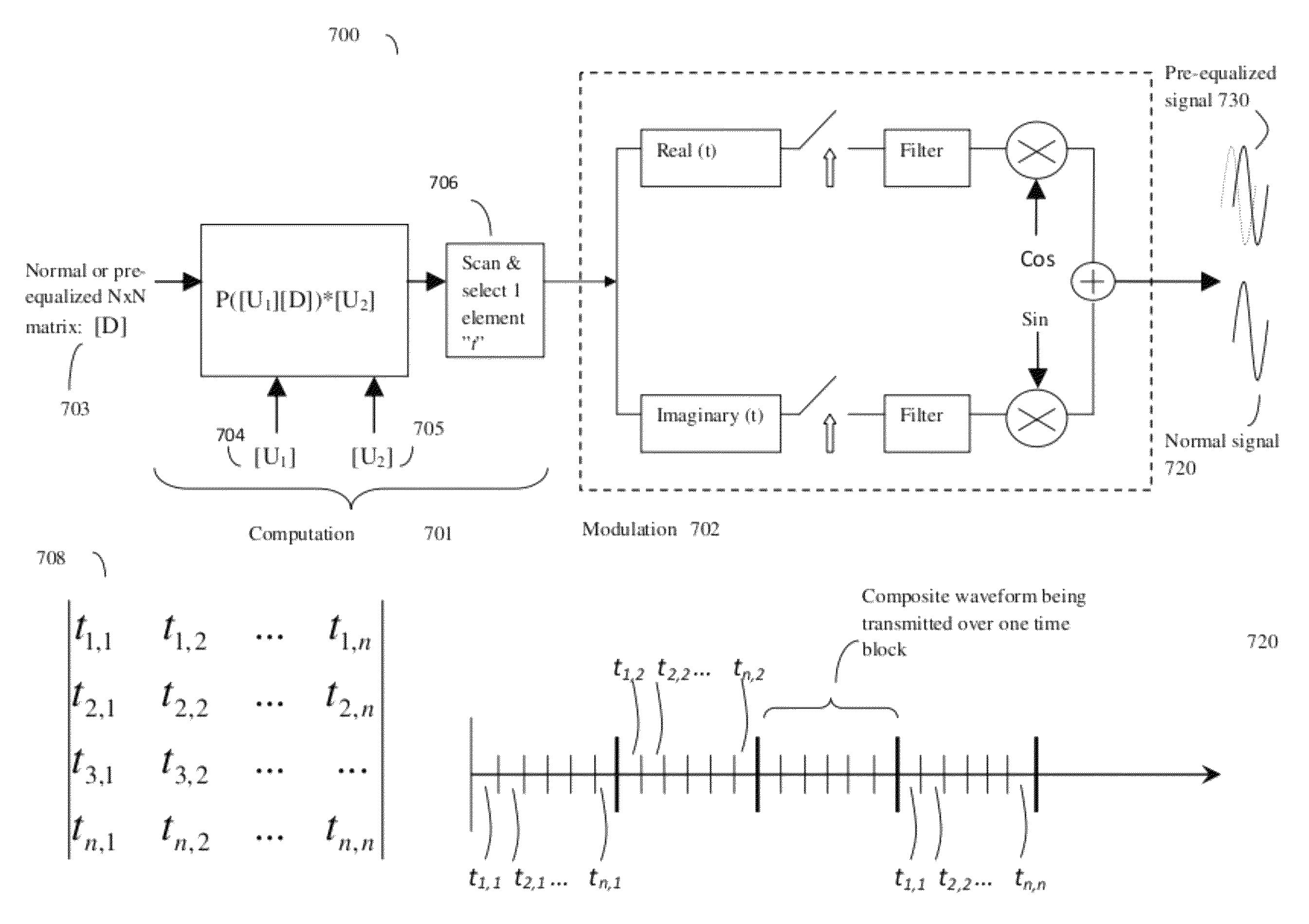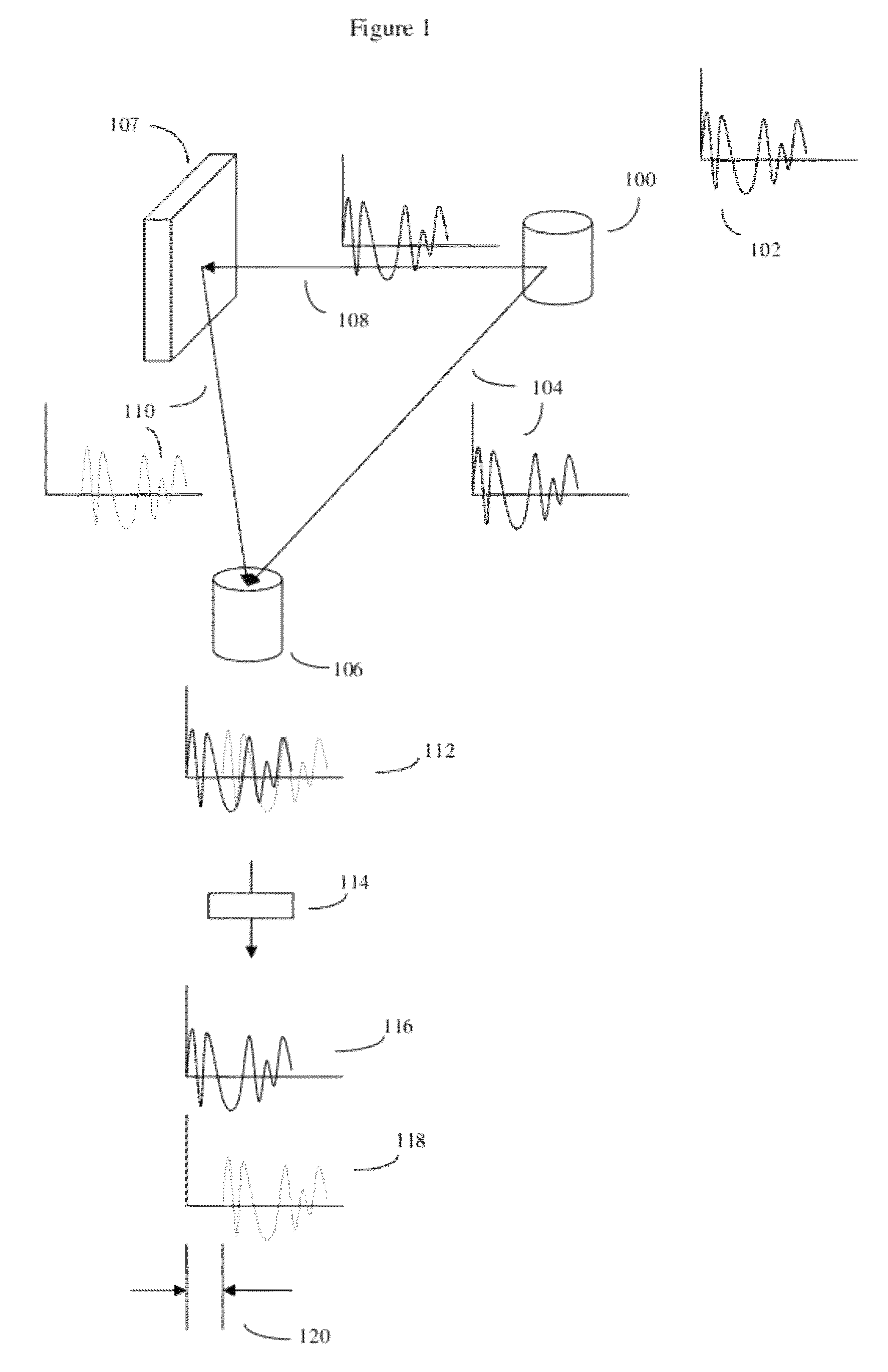Signal modulation method resistant to echo reflections and frequency offsets
a signal modulation and echo reflection technology, applied in the field of communication protocols and methods, can solve the problems of affecting the stability of the signal, the underlying equipment (i.e. the transmitter and receiver) itself cannot always operate perfectly, and the frequency shift can be produced. , to achieve the effect of improving the signal to noise ratio, improving the radar system, and improving the quality
- Summary
- Abstract
- Description
- Claims
- Application Information
AI Technical Summary
Benefits of technology
Problems solved by technology
Method used
Image
Examples
examples
[0100]A microprocessor controlled transmitter may package a series of different symbols “d” (e.g. d1, d2, d3 . . . ) for transmission by repackaging or distributing the symbols into various elements of various N×N matrices [D] by, for example assigning d1 to the first row and first column of the [D] matrix (e.g. d1=d0,0), d2 to the first row second column of the [D] matrix (e.g. d2=d0,1) and so on until all N×N symbols of the [D] matrix are full. Here, once we run out of d symbols to transmit, the remaining [D] matrix elements can be set to be 0 or other value indicative of a null entry.
[0101]The various primary waveforms used as the primary basis for transmitting data, which here will be called “tones” to show that these waveforms have a characteristic sinusoid shape, can be described by an N×N Inverse Discrete Fourier Transform (IDFT) matrix [W], where for each element w in [W],
[0102]wj,k=ⅇⅈ2πjkN
or alternatively wj,k=eijθk or wj,k=[eiθk]j. Thus the individual data elements...
PUM
 Login to View More
Login to View More Abstract
Description
Claims
Application Information
 Login to View More
Login to View More - R&D
- Intellectual Property
- Life Sciences
- Materials
- Tech Scout
- Unparalleled Data Quality
- Higher Quality Content
- 60% Fewer Hallucinations
Browse by: Latest US Patents, China's latest patents, Technical Efficacy Thesaurus, Application Domain, Technology Topic, Popular Technical Reports.
© 2025 PatSnap. All rights reserved.Legal|Privacy policy|Modern Slavery Act Transparency Statement|Sitemap|About US| Contact US: help@patsnap.com



